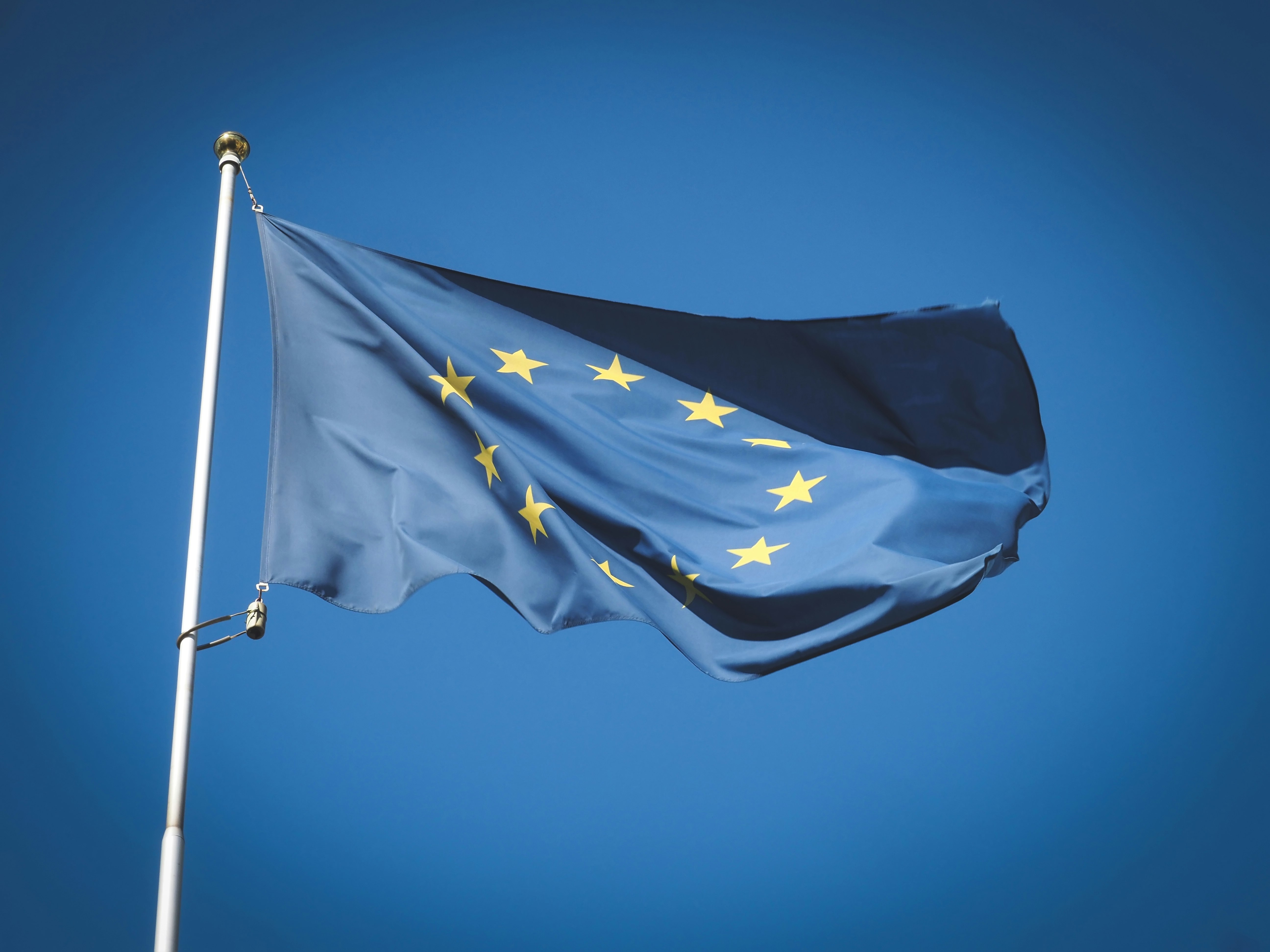Notizie
Il PR FESR Lazio 2021-27 si racconta al ForumPA 2025
 Rafforzamento amministrativo, costi semplificati, partenariato con i territori, monitoraggio civico. Sono gli strumenti chiave della programmazione del Fondo europeo di sviluppo regionale raccontati dall'Autorità di gestione PR FESR Lazio 2021-27 e direttore della Direzione generale Sviluppo economico e attività produttive della Regione Lazio, Tiziana Petucci, al Forum PA 2025.
Rafforzamento amministrativo, costi semplificati, partenariato con i territori, monitoraggio civico. Sono gli strumenti chiave della programmazione del Fondo europeo di sviluppo regionale raccontati dall'Autorità di gestione PR FESR Lazio 2021-27 e direttore della Direzione generale Sviluppo economico e attività produttive della Regione Lazio, Tiziana Petucci, al Forum PA 2025.
Il nuovo PR FESR Lazio 2021-27 dopo la riprogrammazione STEP
Polizze catastrofali: arriva l’ok del Senato, il decreto è legge
 A circa 10 giorni dall'ok della Camera, con 78 voti favorevoli il Senato ha approvato la conversione in legge del decreto sulle polizze catastrofali, che regola l’obbligo di stipula dei contratti assicurativi a copertura dei danni legati a calamità naturali ed eventi catastrofali. Il 31 marzo è scattato l’obbligo per le grandi imprese, mentre le altre saranno coinvolte gradualmente nel corso dell’anno.
A circa 10 giorni dall'ok della Camera, con 78 voti favorevoli il Senato ha approvato la conversione in legge del decreto sulle polizze catastrofali, che regola l’obbligo di stipula dei contratti assicurativi a copertura dei danni legati a calamità naturali ed eventi catastrofali. Il 31 marzo è scattato l’obbligo per le grandi imprese, mentre le altre saranno coinvolte gradualmente nel corso dell’anno.
Bilancio europeo: Ursula von der Leyen annuncia la rivoluzione del QFP post 2027
 A poche settimane dalla presentazione della proposta legislativa per il prossimo bilancio a lungo termine dell'UE, che la Commissione presenterà il prossimo 16 luglio, la presidente Ursula von der Leyen ha anticipato i principali elementi di novità del Quadro finanziario pluriennale (QFP) post 2027 in occasione della "Annual EU Budget Conference". Cosa sappiamo sul prossimo Multiannual Financial Framework (MFF).
A poche settimane dalla presentazione della proposta legislativa per il prossimo bilancio a lungo termine dell'UE, che la Commissione presenterà il prossimo 16 luglio, la presidente Ursula von der Leyen ha anticipato i principali elementi di novità del Quadro finanziario pluriennale (QFP) post 2027 in occasione della "Annual EU Budget Conference". Cosa sappiamo sul prossimo Multiannual Financial Framework (MFF).
Bilancio europeo: per il QFP 2028-2034 lo status quo non è un'opzione
Anche la PAC nei Partenariati nazionali e regionali per investimenti e riforme
 Abbandonata la locuzione “National Plan”, a fronte della levata di scudi degli stakeholder, la Commissione propone la formula dei “Partenariati nazionali e regionali per investimenti e riforme”: di fatto una programmazione unica per tutti i fondi europei assegnati agli Stati membri nell'ambito del Quadro finanziario pluriennale (QFP) post 2027, inclusi quelli della Politica agricola comune (PAC).
Abbandonata la locuzione “National Plan”, a fronte della levata di scudi degli stakeholder, la Commissione propone la formula dei “Partenariati nazionali e regionali per investimenti e riforme”: di fatto una programmazione unica per tutti i fondi europei assegnati agli Stati membri nell'ambito del Quadro finanziario pluriennale (QFP) post 2027, inclusi quelli della Politica agricola comune (PAC).
Bilancio europeo: Ursula von der Leyen annuncia la rivoluzione del QFP post 2027
Revisione PNRR: in arrivo un nuovo bonus auto
 Con la quinta revisione del PNRR, trasmessa alla Commissione Europea lo scorso 21 marzo e presentata il 19 maggio alla Cabina di regia PNRR, è stato introdotto un nuovo ecobonus auto rivolto a famiglie a basso reddito e microimprese, che incentiva la rottamazione delle auto inquinanti. Sul piatto quasi 600 milioni di euro.
Con la quinta revisione del PNRR, trasmessa alla Commissione Europea lo scorso 21 marzo e presentata il 19 maggio alla Cabina di regia PNRR, è stato introdotto un nuovo ecobonus auto rivolto a famiglie a basso reddito e microimprese, che incentiva la rottamazione delle auto inquinanti. Sul piatto quasi 600 milioni di euro.
PNRR, in arrivo credito d’imposta per le imprese che assumono ricercatori
 La commissione Istruzione del Senato ha approvato un emendamento al decreto PNRR Scuola (DL n. 45/2025) che introduce un nuovo credito d’imposta da 10mila euro per le aziende che assumono almeno un ex dottorando o ricercatore.
La commissione Istruzione del Senato ha approvato un emendamento al decreto PNRR Scuola (DL n. 45/2025) che introduce un nuovo credito d’imposta da 10mila euro per le aziende che assumono almeno un ex dottorando o ricercatore.
Bonus assunzioni giovani under 35: via alle domande all'INPS
Sono in arrivo cinque nuove call della Chips Joint Undertaking
FER X transitorio: manifestazioni d’interesse da giugno
 In partenza a giugno la prima fase della procedura competitiva per accedere alle risorse del FER X Transitorio, il meccanismo di supporto valido fino al 31 dicembre 2025 che incentiva impianti da fonti rinnovabili mature. Dal prossimo mese, infatti, i soggetti interessati potranno inoltrare le manifestazioni d’interesse, passaggio necessario per partecipare all’asta, che dovrebbe avere luogo a luglio.
In partenza a giugno la prima fase della procedura competitiva per accedere alle risorse del FER X Transitorio, il meccanismo di supporto valido fino al 31 dicembre 2025 che incentiva impianti da fonti rinnovabili mature. Dal prossimo mese, infatti, i soggetti interessati potranno inoltrare le manifestazioni d’interesse, passaggio necessario per partecipare all’asta, che dovrebbe avere luogo a luglio.
Investimenti sostenibili 4.0 al Sud: fondi esauriti in un giorno
 Anche quest’anno il bando Investimenti sostenibili 4.0 al Sud ha registrato il tutto esaurito in meno di 24 ore dalla sua apertura, costringendo il ministero a chiudere lo sportello. La stessa sorte era toccata all'edizione 2024 per la quale -lo ricordiamo - in seguito sono state stanziate ulteriori risorse.
Anche quest’anno il bando Investimenti sostenibili 4.0 al Sud ha registrato il tutto esaurito in meno di 24 ore dalla sua apertura, costringendo il ministero a chiudere lo sportello. La stessa sorte era toccata all'edizione 2024 per la quale -lo ricordiamo - in seguito sono state stanziate ulteriori risorse.
Guida al credito d’imposta Transizione 5.0: le novità dopo la Manovra 2025


